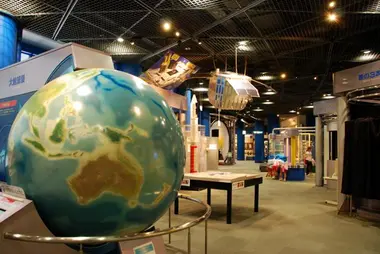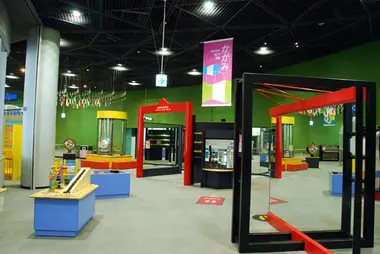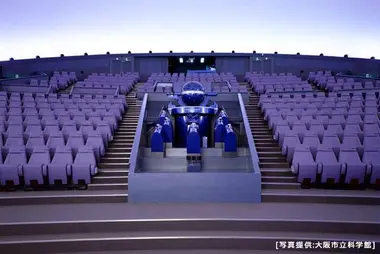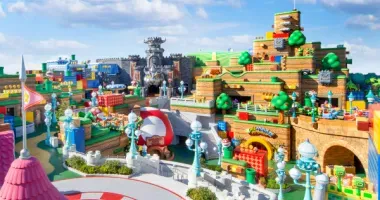Osaka Science Museum 大阪市立科学館
- Published on : 15/02/2019
- by : J.R.
- Youtube
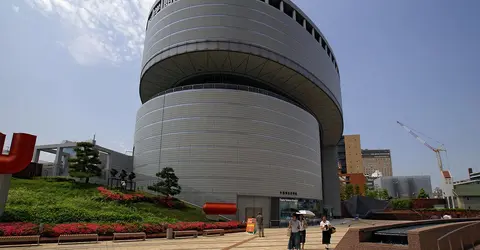
The Science Museum in Osaka
Wikimedia Commons
To infinity and beyond
Passionate about science and astronomy? The Osaka Science Museum invites young and old to dive into the heart of the mysteries of space for an afternoon.
A real institution
The Osaka Science Museum is located north of the city, on the small island of Nakano-Shima, right next to the National Museum of Art . With space as its main themes, but also energy , it houses more than 200 rooms on four floors. This institution originally opened in 1989: its construction was decided to celebrate the centenary of the city of Osaka , with several billion yen invested. At the time, its inauguration was done with great fanfare since it was the very first science museum and planetarium in the country.
The museum, like many scientific institutions around the world, is largely aimed at a young audience . The museum and the planetarium are housed in an imposing building with modern architecture. The collections are presented on 4 floors in a spiral , around a vast central hall.
- To discover: The best museums to do with children in Japan
Discovering science
The visit begins on the 4th floor: the latter has as its theme the universe and more generally astronomy . Children learn everything there is to know about the cosmos , the solar system , stars , satellites , and even about radiation or electromagnetism . This floor also houses a beautiful presentation of the solar system in a reduced model.
Different experimental tools also make it possible to explain the main principles of science in a didactic way. The floor also includes a presentation on the History of Science , the great discoveries and the great Japanese scientists.
Be careful though, the explanations are available in Japanese only. You will therefore have to anticipate and make the guide yourself for your children!
The 3rd floor is dedicated to mineralogy , but also to various everyday materials such as metal or plastic. Beautiful samples of rare minerals and precious stones are presented in the window. The exhibition also focuses on fibers and different fabrics , in particular on the invention of the synthetic fiber. In one of the rooms, you will also find a cosmonaut outfit, made to withstand space.
The collections also address the principles of modern medicine . Finally, a space is dedicated to one of our senses: smell .
The 2nd floor offers a variety of games and activities for children . It's about interacting with different objects in order to carry out an experiment promising to illustrate major scientific principles such as gravity, centrifugal force, reflection, heat, wind ... and many others.
Finally, the 1st floor is dedicated to energies . The exhibition focuses mainly on the different modes of electricity production with applications: thanks to the wind, the sun, water... etc. Models also explain the main principles of electricity production using nuclear power.
- To read also: The Miraikan Museum of Science and Innovation
Journey to the stars
In the basement is the planetarium , the spearhead of the museum. Stars and planets are projected onto a huge dome-shaped Imax screen , 26.5 meters in diameter. It is thus the 5th largest in the world, and is even larger than that of the Geode in Paris... It can accommodate up to 300 people and each screening offers you a walk through the cosmos for 45 minutes.
Note, however: the explanations offered live are exclusively provided in Japanese and no translator is available. It is nevertheless always pleasant to take advantage of this beautiful visual immersion in space...
For information, the museum is closed for renovation until March 30, 2019 , the date of its reopening.
Address, timetable & access
Address
Phone
+81 (0)6-6444-5656Timetable
Watanabebashi Station on the Keihan-Nakanoshima Line or Higobashi Station on the Yotsubashi LinePrice
Permanent exhibition ticket: 400 yen (3€20)Planetarium ticket: 600 yen (4€80)Closed for renovation until March 30, 2019Access
Open Tuesday to Sunday from 9:30 a.m. to 5 p.m.Website
http://trans.sci-museum.jp/LUCSCIM/ns/tl.cgi/http://www.sci-museum.jp/?SLANG=ja…
